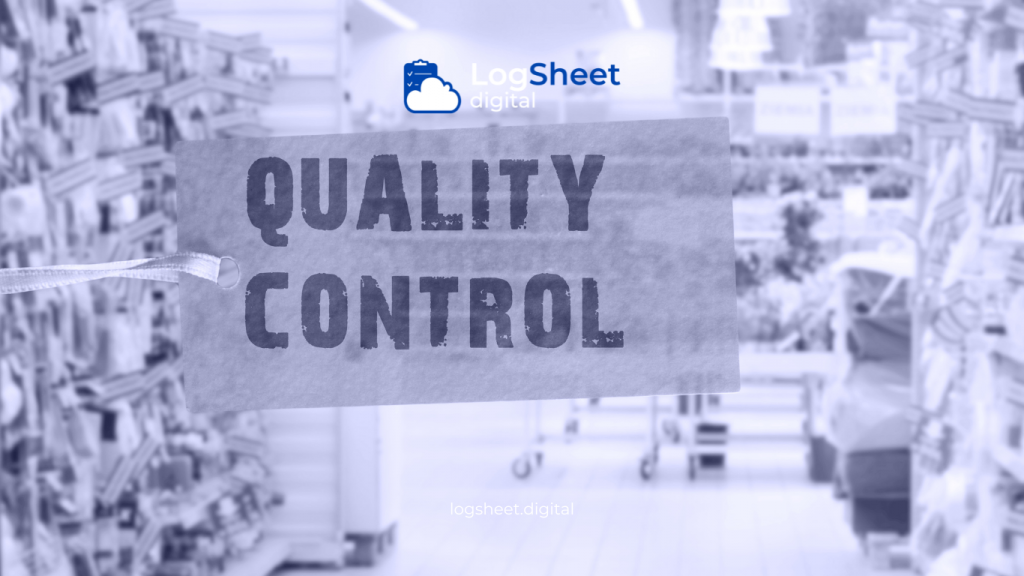The digital era has transformed the way various industries manage and monitor production processes. One of the most significant developments is the introduction of the digital logsheet, a tool designed to record production and quality data in real-time. Digital logsheets have become an essential pillar in quality control, enabling companies to detect and address issues that arise during the production process more quickly.
In this article, we will explore how digital logsheets function as a real-time monitoring tool in quality control. We will also discuss their main benefits, the challenges faced, and the implementation steps that companies can take to maximize the potential of this tool.
What is a Digital Logsheet?

Read More: Digital Logsheet as a Pillar Towards Quality 4.0 in Industry
A digital logsheet is a software-based system used to automatically and integratively record and monitor data on production processes and quality control. Unlike manual logsheets that require recording on paper, digital logsheets allow data to be directly collected from various devices or sensors in the field. The collected data can then be analyzed immediately, providing real-time insights into the production status and product quality.
With real-time monitoring features, companies can quickly take corrective actions if there are deviations in product quality or production processes. This reduces the risk of errors that could impact production costs and the company’s reputation.
Benefits of Digital Logsheets in Quality Control

Read More: Application of Digital Logsheets for Enhanced Quality Monitoring Efficiency
Real-time Quality Monitoring
Digital logsheets enable companies to monitor quality in real-time. Information about the production process is directly input into the system without any time lag. This allows for quick problem detection, and corrective actions can be taken before issues affect the final product. With real-time data, companies can also take preventive measures if there are indications of potential problems, such as declining machine performance or measurement inaccuracies.
Reducing Manual Errors
Human error is often one of the main causes of quality issues in production processes. Manual recording, especially in complex and repetitive processes, is highly susceptible to errors, whether data input mistakes or calculation errors. With a digital logsheet, the recording process is automated, which reduces human error and increases efficiency in time and effort. Operators no longer need to manually input data as the system is already connected to the machines or related devices.
Improving Data Accuracy
Data accuracy is crucial in quality control. Digital logsheets ensure that the recorded data is correct and accurate because the system receives inputs directly from the devices or sensors used in the production process. Higher data accuracy allows companies to perform deeper analyses and make informed decisions based on valid data.
Data Analysis and Performance Monitoring
In addition to recording data in real-time, digital logsheets also enable companies to analyze that data more comprehensively. With existing analytical tools, companies can identify trends, patterns, and potential issues that might be overlooked if using manual methods. For instance, if there is a declining quality trend over several days, the digital logsheets provide early warnings, allowing companies to investigate and resolve issues before they escalate.
Facilitating Reporting and Auditing
One of the significant advantages of digital logsheets is the ease of reporting and auditing. The data recorded in the system can be accessed quickly and easily, which is particularly helpful when companies need to provide reports to external parties, such as auditors or certification bodies. A clear digital trail allows for faster and more efficient inspections and verifications.
Time and Cost Efficiency
Digital logsheets not only reduce human errors and improve data accuracy but also save time and costs in the long run. With a continuously operating automated system, companies can enhance operational efficiency, reduce production downtime due to quality issues, and avoid additional costs from defective products.
Steps to Implement Digital Logsheets in Quality Control

Read More: Real-Time Quality Monitoring: How Digital Logsheets Transform Production
Implementing digital logsheets in quality control requires careful preparation. Here are some steps companies should consider before adopting this system:
- Analyze Company Needs: The first step is to understand the specific needs of the company regarding quality control. Each industry and company has unique production processes, so it is essential to ensure that the chosen digital logsheets system can be tailored to those needs.
- Select the Right Digital Logsheets Platform: After analyzing needs, the next step is to choose the right digital logsheets platform. Many vendors offer digital logsheets solutions, but not all are suitable for every type of industry. Companies need to select a system that can integrate with existing machines and devices.
- Train Employees: Employees responsible for quality control and machine operation must be adequately trained to use the digital logsheets system. This training is essential to ensure they can take full advantage of all features available in the system, including real-time monitoring and data analysis.
- Integration with Other Systems: Digital logsheets should be able to integrate with other systems used by the company, such as ERP (Enterprise Resource Planning) or MES (Manufacturing Execution System). This integration ensures that all collected data can be analyzed holistically and used for better decision-making.
- Evaluation and Refinement: After the digital logsheets are implemented, the company needs to conduct regular evaluations to ensure that the system operates as expected. If there are issues or shortcomings, refinements can be made to enhance the system’s performance and meet evolving needs.
Challenges in Implementing Digital Logsheets

Read More: Digital Logsheets: The Latest Solution for Enhanced Quality Monitoring and Analysis
Although offering many benefits, implementing digital logsheets in quality control also faces its own challenges. Here are some challenges companies may encounter:
- Implementation Costs: One of the main challenges is the substantial initial cost for implementing digital logsheets. Companies must invest in hardware, software, and employee training. However, these costs are usually offset by increased efficiency and reduced errors in the future.
- Resistance to Change: Not all employees or company management readily accept technological changes. Some employees may feel more comfortable with manual recording methods and may be reluctant to switch to digital systems. Therefore, companies need to communicate the benefits of digital logsheets clearly and provide adequate support during the transition period.
- Data Security: With digital logsheets, critical company data is stored electronically. This presents data security risks, such as potential cyberattacks or data breaches. Therefore, companies must ensure that the systems they use are equipped with strong security protocols.
Case Study: Successful Implementation of Digital Logsheets in Quality Control

Read More: Optimizing Quality Control through Digital Logsheets
A manufacturing company in the electronics sector successfully implemented digital logsheets to improve quality control. Before the adoption of digital logsheets, they relied on manual recording, which often led to data input errors and delays in detecting production problems.
With digital logsheets, the company was able to monitor product quality in real-time, enabling quicker corrective actions. As a result, they successfully reduced the number of defective products by 30% and improved overall production efficiency.
Conclusion

Read More: Improving Quality Control Accuracy with Digital Logsheets
Digital logsheets have proven to be a highly effective tool for real-time monitoring and quality control across various industrial sectors. With the capability to automatically record data, provide in-depth analysis, and detect quality issues in real-time, digital logsheets help companies improve operational efficiency and reduce human errors.
Although there are challenges in implementation, such as costs and resistance to change, the long-term benefits offered by digital logsheets far outweigh the drawbacks. With proper preparation and effective implementation strategies, companies can maximize the use of digital logsheets to achieve higher quality standards and optimize production processes across their business lines.
Digital logsheets are not just a tool for recording data; they are also a solution for a smarter and more integrated future in quality control.






comments (0)